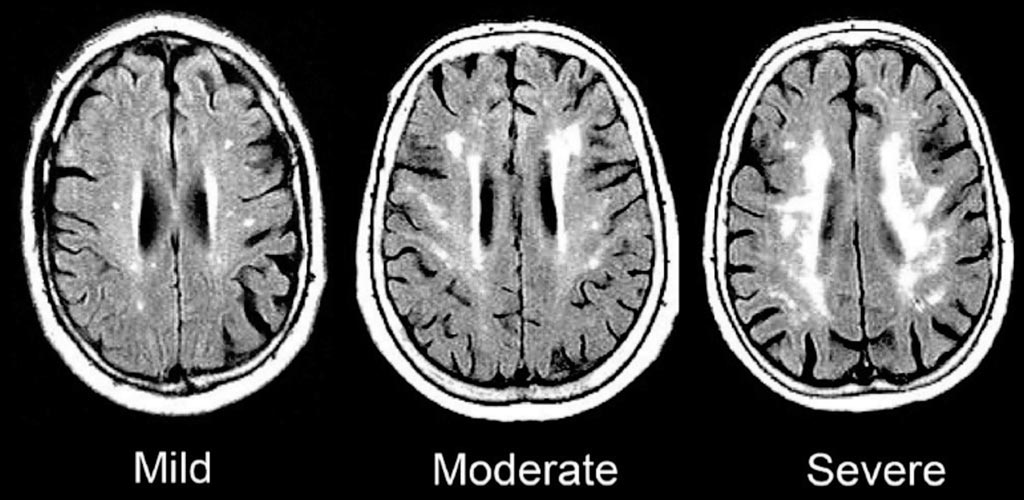Inflammation Marker Tied to Dementia Increases with Age
By LabMedica International staff writers
Posted on 18 Jul 2018
Scientists have added to evidence that rising and chronic inflammation as measured by a biomarker in the blood in middle and late age are linked to visible structural changes in the brains of people with poor cognition and dementia.Posted on 18 Jul 2018
Evidence has shown that chronic inflammation and the biochemicals associated with it may damage the brain. C-reactive protein, an inflammatory factor made in the liver, for example, already has become a marker for chemical damage to heart and blood vessel tissue indicative of heart attack.

Image: A 3T brain magnetic resonance imaging showing white matter damage (Photo courtesy of Professor Rebecca Gottesman).
Neurologists at Johns Hopkins University School of Medicine (Baltimore, MD, USA) and their colleagues examined whether the pattern of middle- to late-life systemic inflammation was associated with white matter (WM) structural abnormalities in older adults. A total of 1,532 participants, mean age 76.5 ±5.4, underwent 3T brain magnetic resonance imaging to quantify white matter hyperintensity volume and whole-brain WM microstructural integrity (fractional anisotropy, mean diffusivity).
The participants included 61% women, and 28% were African-American. High-sensitivity C-reactive protein (CRP), a marker of systemic inflammation, was measured at three visits (21 and 14 years before, and concurrent with, neuroimaging). Participants were categorized into 1 of 6 groups based on their 21-year pattern of low or less than 3 mg/L versus elevated equal to greater than 3 mg/L CRP.
The scientists reported that compared to the group with low CRP at all three visits, the group that transitioned from low to elevated CRP during midlife demonstrated greatest white matter hyperintensity volume and poorest WM microstructural integrity, after adjusting for demographic variables and cardiovascular risk factors. Even after adjusting for demographics (e.g., sex and education) and cardiovascular disease risk, they found that the 90 people who transitioned from low to persistently elevated C-reactive protein during midlife, indicating increasing inflammation, showed the greatest damage to the white matter in the brain.
Rebecca Gottesman, MD, PhD, a professor of neurology and epidemiology and senior author of the study, said, “Our work is important because currently there aren’t treatments for neurodegenerative diseases, and inflammation may be a reversible factor to prolong or prevent disease onset. Now, scientists have to look at how we might reduce inflammation to reduce cognitive decline and neurodegeneration.” The study was published in the August 2018 issue if the journal Neurobiology of Aging.
Related Links:
Johns Hopkins University School of Medicine














